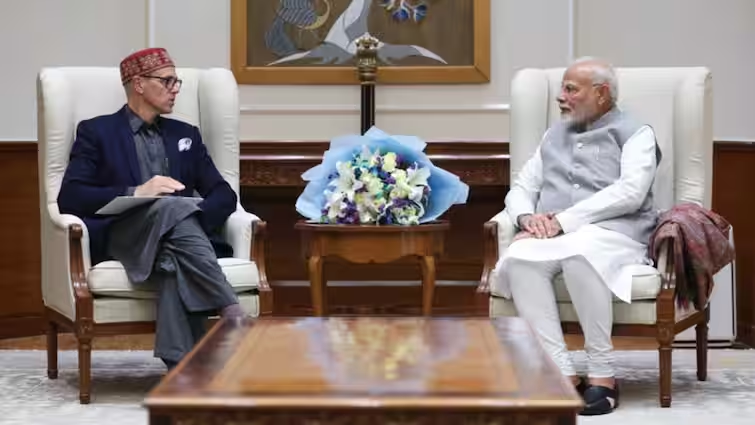India to Procure 26 Rafale Marine Jets from France in Rs 63,000 Crore Deal to Boost Naval Power
In a significant move aimed at enhancing the operational capability of the Indian Navy, the Government of India has approved a high-value defence acquisition involving 26 Rafale Marine fighter jets from France. The deal, which carries an estimated value exceeding ₹63,000 crore, received the green light from the Cabinet Committee on Security (CCS), signalling a strong commitment to bolster India’s maritime defence strength.
Final Approval for Strategic Purchase
The long-anticipated decision to buy these advanced multirole combat aircraft was finalized by the CCS, paving the way for the Ministry of Defence (MoD) to initiate final negotiations and sign the formal agreement. Sources have indicated that the official signing is expected to take place later this month, coinciding with the visit of French Defence Minister Sébastien Lecornu to India.
As part of the proposed agreement, the Indian Navy will acquire 22 single-seater Rafale Marine fighter jets and four dual-seater variants. This fleet will serve as a potent addition to India’s maritime strike capabilities and is expected to operate primarily from the INS Vikrant, India’s first domestically-built aircraft carrier.
Comprehensive Defence Package
Beyond the aircraft themselves, the acquisition includes a wide-ranging package that covers fleet upkeep, crew training, logistics infrastructure, and localized production commitments under the defence offset policy. This ensures not only a transfer of cutting-edge technology but also long-term support for the platform in Indian conditions.
The Rafale Marine version, manufactured by Dassault Aviation, is specially designed for naval operations and has proven its worth through deployments with the French Navy. The jets boast superior agility, combat range, and versatility in air-to-air and air-to-ground roles, making them a formidable force multiplier in maritime operations.
Support for Indian Air Force Fleet
According to a report published in the Economic Times, the latest contract will also include performance-based logistics and spare parts support for a duration of five years, not only for the new naval Rafales but also for the 36 Rafale aircraft that are currently in service with the Indian Air Force (IAF). These aircraft were procured under a ₹59,000 crore deal signed in 2016.
This dual-service use of the Rafale platform is expected to enhance synergy between the IAF and the Navy, allowing for shared maintenance infrastructure, streamlined logistics, and common pilot training modules. It also opens the possibility of integrated operations using the Rafale’s proven “buddy-buddy” mid-air refuelling system, where one aircraft can transfer fuel to another mid-flight, thereby extending its operational range and endurance.
Enhancing Maritime Readiness
Deployment of these fighter jets on the INS Vikrant will provide a significant tactical advantage to the Indian Navy in blue-water missions. Currently, the Vikrant operates with the Russian-origin MiG-29K jets, but their performance has been mixed and limited by serviceability concerns. The inclusion of Rafale Marine aircraft is viewed as a strategic upgrade that aligns with India’s aim of maintaining a robust presence in the Indo-Pacific region.
All 26 aircraft are expected to be delivered within a timeframe of 37 to 65 months following the signing of the contract. The complete induction process is anticipated to be completed by the 2030-31 period, as per reports from the news agency ANI.
In addition to the aircraft and logistical systems, the deal may encompass modernisation of ground-based support systems and integration software, enabling seamless operation of Rafale jets across both air and naval platforms.
Decision Between Rafale and Super Hornet
Prior to this decision, the Indian Navy had been evaluating two advanced carrier-based fighter options – the Rafale Marine and Boeing’s F/A-18 Super Hornet. Both aircraft underwent rigorous trials at the shore-based test facility in Goa to demonstrate their compatibility with India’s aircraft carrier deck operations.
Chief of Naval Staff Admiral R. Hari Kumar, in an interview with ABP Live, confirmed that both jets had met the required benchmarks. “We are satisfied with the performance of both aircraft. The final decision now rests with the Ministry of Defence,” he said.
He acknowledged that while both platforms have their advantages, choosing the Rafale would streamline support systems, given the Air Force already operates the same platform. “Having a common platform helps in terms of spare parts, maintenance and training,” the Navy Chief explained.
Indigenous Jet Development in Progress
Although the Navy is proceeding with the Rafale acquisition for immediate operational needs, Admiral Kumar reiterated the long-term goal of indigenizing carrier-based fighter operations. He stated that India is currently developing a twin-engine deck-based fighter aircraft (TEDBF) under the Aatmanirbhar Bharat initiative.
The prototype of the TEDBF is expected to be ready by 2026-27, with full induction likely by 2034. “The imported jets will serve as an interim capability until our indigenous option is ready,” the Admiral added. He highlighted that operational lessons from the use of MiG-29K and evaluation of foreign jets have informed the design requirements of the TEDBF.
Trials and Future Upgrades
The aircraft trials conducted last year by both Dassault and Boeing at Goa demonstrated the ability of these jets to operate from ski-jump carriers like INS Vikrant. According to officials involved in the evaluation, all performance parameters and technical requirements were met during these assessments.
This success in carrier trials was crucial in building a case for their procurement, given the unique demands of operating fast jets from the limited space and short take-off configurations of aircraft carriers.
The Rafale Marine jets, once integrated, will not only add immediate muscle to India’s naval fleet but will also serve as a testbed for future technologies and indigenous platforms.
Growing Complexity of Malabar Naval Exercise
In a related development, Admiral Kumar also spoke about the Malabar Naval Exercise, an annual quadrilateral naval drill involving India, the United States, Japan, and Australia. He remarked that the exercise has seen progressive upgrades in complexity each year and will continue to evolve with new training goals and tactical coordination efforts.
“Every edition of the Malabar drill aims to achieve new benchmarks. There are no current plans to include additional countries, but the focus remains on expanding the scope and complexity of joint operations,” he said.
These drills, held amidst a rapidly shifting geopolitical landscape, are crucial for interoperability among friendly navies and send a strong signal regarding India’s commitment to maintaining a rules-based order in the Indo-Pacific.
Strengthening Defence Ties with France
This landmark defence agreement with France not only reflects the deepening strategic partnership between the two countries but also underscores India’s effort to diversify its defence procurement sources and reduce dependence on any single supplier.
France has emerged as a reliable defence partner for India, and the Rafale Marine deal is a continuation of successful military cooperation that also includes submarine programs and technology transfer arrangements.
The procurement of 26 Rafale Marine jets from France marks a transformative step in India’s naval aviation capabilities. As the country aspires to be a major maritime power in the Indo-Pacific, investments in technologically advanced platforms like the Rafale Marine are crucial. The aircraft’s induction into the Navy will enhance mission readiness, operational flexibility, and strategic deterrence in a region witnessing increasing geopolitical competition.
With this acquisition, India reaffirms its commitment to safeguarding national interests, promoting indigenous defence manufacturing, and building strong international defence collaborations for a secure future.















